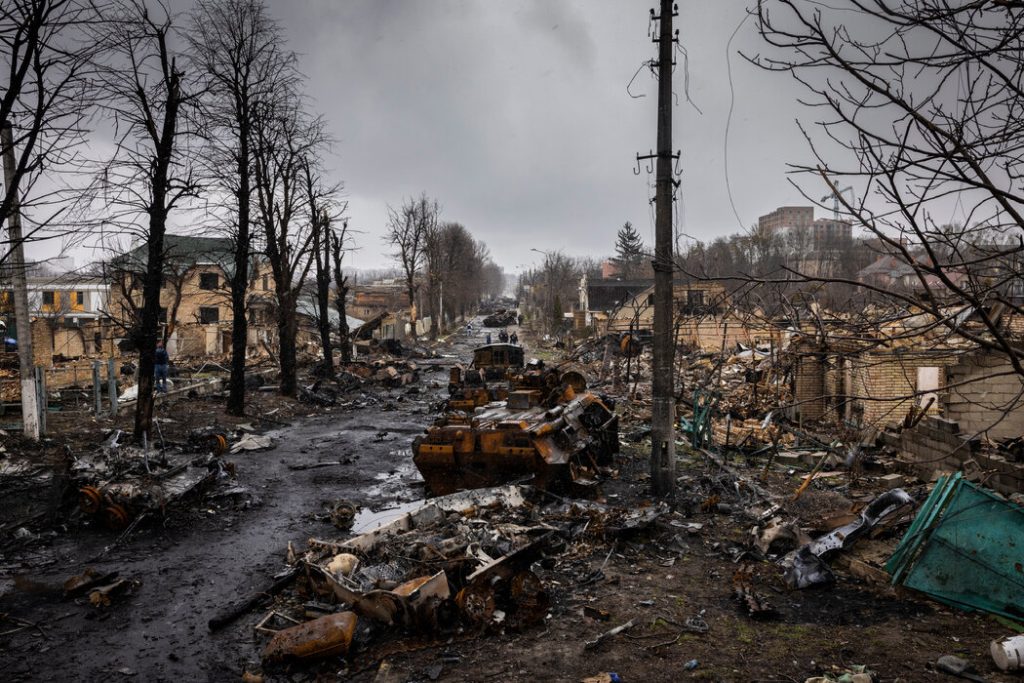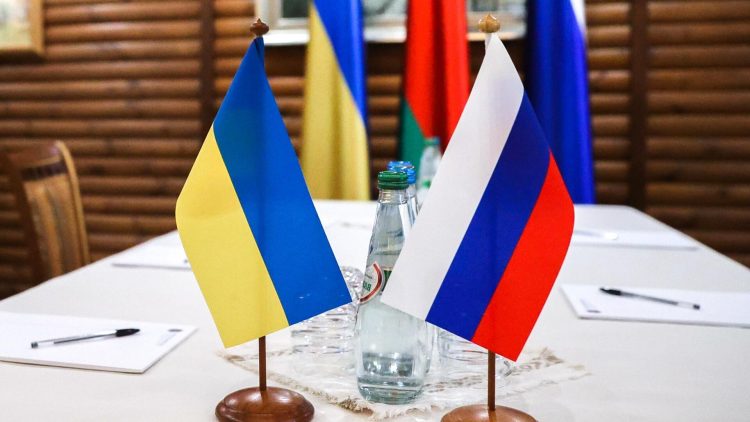Introduction
The Russia-Ukraine conflict, which erupted in February 2022, has become one of the most significant geopolitical crises of the 21st century, with far-reaching consequences not just for the countries involved, but for the broader global economy. While the immediate human and geopolitical impacts of the war are devastating, the economic ramifications, particularly for the global energy market, are profound and far-reaching.
Russia is one of the world’s largest producers of oil and natural gas, and Ukraine plays a strategic role in energy transit across Europe. As the conflict continues, the global energy supply chain faces significant disruptions, particularly as countries impose sanctions on Russia and seek to reduce their reliance on Russian energy exports. These developments are leading to a profound restructuring of global energy flows, and the impacts are being felt in the form of price volatility, energy shortages, and shifts in geopolitical alliances.
The central question for policymakers, businesses, and consumers is: How will the continued conflict between Russia and Ukraine affect global energy supply chains? This article explores the short-term and long-term impacts of the war on global energy markets, with a particular focus on oil, natural gas, and renewable energy, as well as the broader economic consequences.
I. Russia’s Role in Global Energy Markets
Before the war, Russia was a dominant player in the global energy markets, particularly in oil and natural gas. The conflict has disrupted these markets and has led to significant reevaluations of the reliance on Russian energy resources. Below is an overview of Russia’s role in the energy supply chain:
- Oil: Russia is one of the world’s largest producers and exporters of crude oil, accounting for approximately 10% of global production. The country has significant influence over global oil prices, as its supply is crucial to Europe, Asia, and increasingly the global south. Russia’s oil exports, primarily sent to Europe and Asia, have historically been a cornerstone of its economy.
- Natural Gas: Russia is the largest exporter of natural gas globally, supplying around 40% of Europe’s gas needs through pipeline infrastructure like Nord Stream and Yamal-Europe. Russian gas is essential for heating, electricity generation, and industrial processes across much of Europe. In addition to European exports, Russia supplies natural gas to Asia, particularly China and India.
- Coal: Russia is also a significant exporter of coal, providing a large portion of the energy supply for Asian countries like China and India. While coal demand has been waning globally due to environmental concerns, Russia’s coal exports remain crucial for countries with limited alternative energy resources.
- Geopolitical Leverage: Energy has long been a tool of geopolitical influence for Russia, especially in its relationship with Europe. By controlling the energy flow to Europe, Russia has been able to exert influence over European countries’ political and economic decisions. This dynamic is especially significant given Europe’s reliance on Russian energy.
II. Short-Term Disruptions to Energy Supply Chains
The immediate effects of the Russia-Ukraine conflict on global energy supply chains were rapid and severe. As sanctions and military actions escalated, several disruptions occurred:
- Sanctions on Russian Energy Exports: Following Russia’s invasion of Ukraine, the United States, European Union, and other Western countries imposed heavy sanctions on Russian energy exports. These sanctions have primarily targeted Russia’s oil, natural gas, and coal industries, aiming to reduce Russia’s ability to generate revenue through energy sales.
- Oil sanctions: The EU and U.S. have significantly reduced or cut off imports of Russian oil. European countries, which relied heavily on Russian oil, have been scrambling to find alternative sources from Middle Eastern producers, North American shale oil, and African suppliers.
- Gas sanctions: The EU has moved toward cutting its dependency on Russian natural gas, but this transition is more difficult due to the infrastructure required to switch to alternative energy sources. Countries like Germany, which depend heavily on Russian gas, have faced significant energy insecurity.
- Price Volatility: The sanctions and disruptions in supply chains have led to price volatility across energy markets. The price of Brent crude oil spiked to over $120 per barrel in 2022, as markets anticipated a significant shortfall in Russian oil. Natural gas prices in Europe reached record highs, with the Dutch TTF gas futures market seeing an increase of over 500% in early 2022. The higher prices are particularly felt by energy-dependent industries and consumers, especially in Europe, where rising gas prices have led to higher heating costs and disruptions to manufacturing industries. These price hikes could reduce consumer demand for energy and further exacerbate inflationary pressures globally.
- Supply Chain Disruptions: Beyond sanctions, the physical disruption of energy transportation routes—such as the destruction of pipelines or damage to key transit infrastructure—has been significant. The Nord Stream 2 pipeline, designed to supply natural gas from Russia to Germany, was halted indefinitely due to political and military considerations.
- Shipping routes: The closure or disruption of major oil and gas pipelines and shipping routes in the Black Sea and Eastern Europe has created logistical bottlenecks. This has led to a scramble for alternative routes, further straining energy distribution channels.
III. Long-Term Shifts and Strategic Realignment in Global Energy Markets
While short-term disruptions have created immediate uncertainty, the long-term effects of the ongoing Russia-Ukraine conflict on global energy supply chains may be even more significant. Several key long-term developments are likely to shape the energy landscape:
- Reconfiguration of Energy Supply Chains: The energy market diversification away from Russian supply is already underway. European countries, for example, are making significant investments in liquefied natural gas (LNG) infrastructure to import gas from the U.S. and other LNG producers. Additionally, renewable energy sources are gaining importance as countries accelerate their shift away from Russian fossil fuels.
- Energy independence: European nations, especially those in Eastern and Central Europe, are prioritizing energy independence and will likely increase their reliance on domestic renewable energy and new energy partnerships. Some countries, such as Germany, have ramped up investments in wind, solar, and hydropower to reduce reliance on external fossil fuel supplies.
- Long-Term Price Adjustments: As energy supply chains adapt to the loss of Russian oil, gas, and coal, energy prices will likely stabilize at new, higher levels. This could affect the global competitiveness of energy-intensive industries, particularly in Europe and Asia, where companies may struggle with higher operational costs. This change could lead to shifts in manufacturing locations, with some industries relocating to regions with more affordable energy.
- Increased Reliance on Non-Russian Energy Suppliers: The U.S., which has already ramped up its energy exports, especially LNG, could benefit from increased demand for its natural gas. Similarly, Qatar, Australia, and Norway have positioned themselves as key LNG suppliers to Europe and other regions looking to reduce reliance on Russian gas.
- Asia is also expected to increase its reliance on energy imports from Russia’s eastern energy supply routes, including the Siberian pipeline and LNG shipments to China and India. This could strengthen Russia’s energy relationships with Asian markets, particularly as demand for energy in the region continues to grow.
- Shift Toward Renewable Energy and Energy Security: The energy security risks highlighted by the Russia-Ukraine conflict could accelerate the global transition to renewable energy. Governments are likely to increase investments in solar, wind, hydropower, and nuclear power as part of a broader strategy to decarbonize energy systems and reduce geopolitical vulnerabilities. This transition could alter the global energy mix in favor of clean energy technologies.
- Green energy investments are poised to grow, especially in Europe, which is heavily investing in solar farms, offshore wind projects, and green hydrogen as part of its Green Deal. The U.S. is also likely to continue its push for clean energy technologies as part of its energy independence strategy.

IV. Implications for Global Economies and Energy Consumers
The global energy supply chain is set to experience significant shifts as a result of the ongoing conflict. These changes will have broad economic implications:
- Inflationary Pressures: The surge in energy prices due to disruptions in supply will likely keep inflation rates high. Energy-intensive sectors like transportation, manufacturing, and chemicals are likely to see cost increases, which could further exacerbate consumer inflation. This is especially concerning for economies that are still recovering from the COVID-19 pandemic and may struggle with higher living costs.
- Economic Recession Risks: Higher energy prices, combined with ongoing supply chain disruptions, could push some countries into economic recession. Europe, in particular, faces a heightened risk due to its reliance on Russian energy. Countries that cannot secure alternative energy supplies quickly may face power shortages, higher costs, and potential economic contraction.
- Energy Access and Geopolitical Alliances: The Russia-Ukraine conflict will reshape geopolitical alliances in the energy sector. Nations will increasingly prioritize energy security and supply chain diversification, leading to new energy partnerships and strategic alliances. Asia, for example, is likely to increase its engagement with Russia and Central Asian energy producers, while Europe may strengthen its ties with the Middle East and North Africa for energy imports.
V. Conclusion: A New Era for Global Energy Markets
The Russia-Ukraine conflict is reshaping the global energy landscape in profound ways. In the short term, the market has seen significant disruptions, price volatility, and logistical challenges. However, the long-term impact may be even more transformative as energy supply chains are realigned and global dependencies shift.
Energy markets will face higher costs, inflationary pressures, and geopolitical realignments in the years ahead. However, the crisis has also accelerated the global shift towards renewable energy and energy security, providing a path forward for countries and businesses to build more resilient and sustainable energy systems. The outcome of this conflict will likely define the future of global energy markets for decades to come.

















































